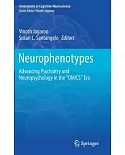There are an estimated four million individuals with low vision in the United States—a problem so significant the federal government established a new set of regulations in 2001 requiring
all federal Web sites and federally-owned office equipment to be accessible to the blind. In Psychophysics of Reading in Normal and Low Vision, author Gordon E. Legge, a leader in
the field of low-vision research, discusses the role of vision in reading, focusing on the reading performance of people with normal, healthy vision and people with impaired vision. Legge
describes the influence of physical properties of text on reading performance and the implications for information processing in the visual pathways.
Providing an overview of 20 seminal research papers in the field, this book explores:
*different forms of low vision that affect reading;
*text characteristics that optimize reading for those with low vision;
*principles underlying the legibility of text and guidelines for displaying text; and
*special topics, including the role of the magnocellular pathway in reading and dyslexia, Braille reading, and fonts for highway signs.
An accompanying CD contains reprints of the seminal series of articles by Gordon E. Legge and colleagues on the psychophysics of reading in normal and low vision, published between 1985 and
2001.
This volume will be of interest to researchers and professionals in the area of low vision, including graphics engineers, HCI scientists, human factors specialists, low-vision
rehabilitation specialists, opthamologists, occupational therapists, special education teachers, as well as cognitive scientists and perceptual psychologists. It is also suitable for
advanced students with a background in the topic.





















